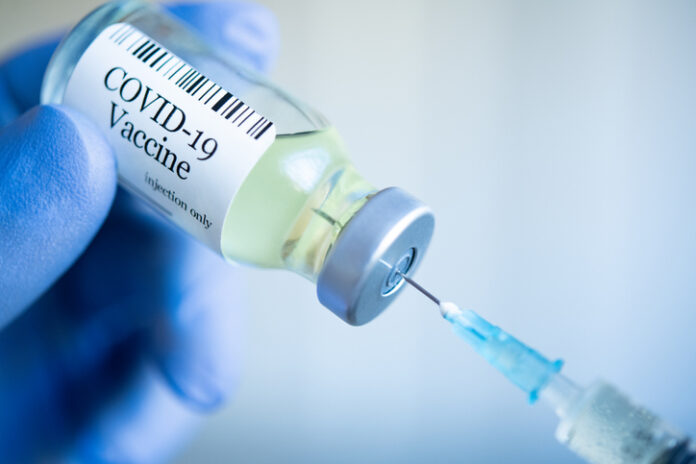By Raymond March
In October, large portions of the United States began experiencing rapid increases in new COVID-19 cases. Many European countries have experienced a similar surge in cases, even after being devastated by severe COVID-19 outbreaks earlier this year.
Fearing the arrival of a second wave, several states reenacted various lockdown measures to curb spreading disease. Many European nations followed suit. But necessity is the mother of innovation. And pathbreaking medical innovation has arrived.
Vaccine Available December
On November 9th, Pfizer announced it had developed a more than 90 percent effective COVID-19 vaccine. A week later, Moderna released clinical trial findings indicating its COVID-19 vaccine was 95 percent effective. Stanely Plotkin, the inventor of the rubella vaccine, found Moderna’s results to be “extremely encouraging” and “show that the platform really works… and considering the speed with which the platform was put into operation, it’s an excellent result.”
Federal regulators agreed. On December 11, the Food and Drug Administration’s (FDA) advisory board granted emergency use authorization for Pfizer’s COVID-19 vaccine. The Centers for Disease Control and Prevention (CDC) Director Richard Redfield gave similar approval shortly after, making a COVID-19 vaccine available to distribute.
Barring any unforeseen setbacks, Pfizer expects to produce 15 to 20 million vaccines by the end of the year, including 2.9 million doses in the next week. Moderna’s COVID-19 vaccine is also expected to receive approval soon, with the hopes of distributing another 20 million doses by the end of December.
Pfizer’s and Moderna’s swift development of an effective COVID-19 vaccine has generated widespread and well-deserved praise. An opinion piece in the Wall Street Journal argues the scientists who developed the vaccines deserve the Nobel Peace Prize for their discovery. An article in the Irish Examiner called the leadership of BioNTech, which partnered with Pfizer to develop the vaccine, “heroes of our time.”
Vaccine Developed Nine Months Earlier
Even more remarkable, according to an article published on December 7 in New York magazine’s Intelligencer, is that Moderna’s vaccine was developed on January 13th, only two days after the vaccine’s genomic sequence was made public. This was even before COVID-19 reached the United States.
However, until the FDA approved the vaccine, it was not legally available to anyone not participating in clinical trials. This means as the article’s title indicates, “we had the vaccine the whole time.”
A nearly eleven-month gap between the vaccine’s discovery and FDA approval is frustrating. Unfortunately, the FDA’s sluggishness to approve life-saving medication is nothing new even during a public health crisis.
From 2014-2016, the Ebola virus caused nearly 11,000 deaths across western Africa. Fortunately, scientists across the globe worked together to develop a vaccine in less than a year. The Ebola vaccine, however, did not receive FDA approval until 2019—four years after it was created.
Bureaucratic Bottleneck
But would medical scientists be able to quickly develop a safe and effective vaccine without the FDA’s oversight? Evidence from previous influenza pandemics suggests they can. From 1957-1958, the 1958 influenza (often referred to as the Asian Flu) spread through the United States, infecting 20 million individuals and causing 116,000 deaths. At this time, the FDA held significantly less regulatory authority and did not regulate vaccines.
Similar to Moderna’s COVID-19 vaccine, medical scientists developed a vaccine for the 1958 influenza before the virus reached the United States. Without the FDA prolonging approval, cooperation between public health agencies and private vaccine developers were able to distribute 60 million doses of the vaccine during the first two months of the pandemic.
Consequently, hospitals were not overwhelmed and there was “no serious disruption of community life” during the 1957-1958 pandemic. As an article written at the time in the Journal of the American Medical Association noted, quick development, approval, and distribution of the vaccine “made it possible for a nation to organize in advance of an oncoming epidemic for the first time in history.”
The frustrating delay between the time when a COVID-19 vaccine was discovered and the day the FDA gave its approval should not overshadow the Pfizer and Moderna scientists’ remarkable achievement. Their pioneering discovery is truly phenomenal. However, acknowledging the harmfulness of the FDA’s delay in authorizing a COVID-19 vaccine can help implement better policy during future public health crises.
COVID-19 is deadly. But regulatory barriers can be, too.
Raymond March is a research fellow at the Independent Institute and assistant professor of economics at North Dakota State University. This article was published on December 15 in the FDAReview.org blogpost of the Independent Institute. Reprinted with permission.





















